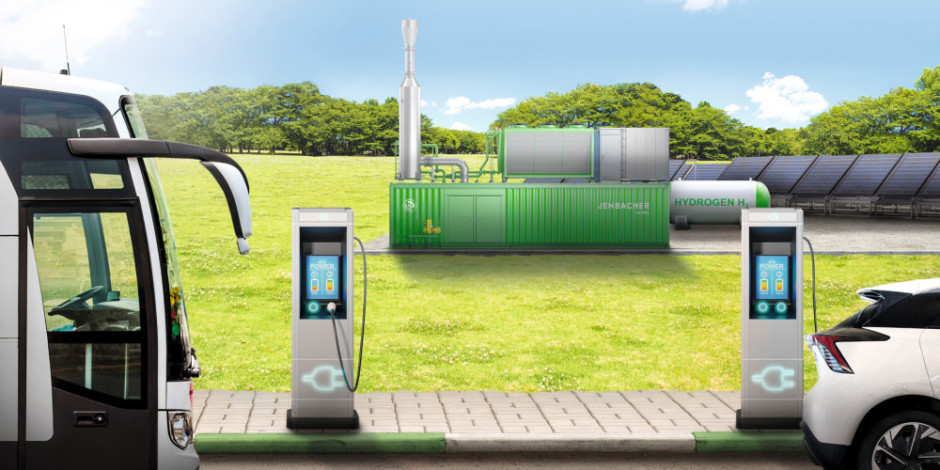
Pioneering hydrogen technology for the energy transition
As a key enabler and an integral part of the energy transition, INNIO Group has launched its “Ready for H2” portfolio, which includes 100% hydrogen-powered internal combustion engines. Based on decades of experience gained on power generation from high hydrogen content fuels and despite the current limitations in green hydrogen availability, INNIO Group already can showcase several commercial hydrogen projects worldwide, underlining its technological expertise through its Jenbacher solutions. A comprehensive simulation from INNIO Group explores a practical use case scenario and determines load requirements, operational hours, and the extent of EV load satisfaction, and as well the heat demand. Using EV load profiles derived from industry experience and informed assumptions, INNIO Group models EV demand that can be met flexibly based on the EV station’s loads schedule. This simulation determines the amount of electricity the station can provide on an hourly basis and the daily requirement. This strategic approach helps ensure efficient energy management, aligning hydrogen on site supply with energy demand while considering the unique characteristics and requirements of the EV charging infrastructure.
Enhancing efficiency through heat recovery
Efficient and sustainable EV charging stations
Financial viability and decarbonization potential
With INNIO Group’s Jenbacher product capabilities, the evaluation of the costs for implementation of a virtual pipeline and hydrogen supply for a genset powering an EV charging station can be carried out effectively. For a Jenbacher H2-Engine with a nominal electrical power capacity of 1,000 kW, the projected costs of the delivered energy to the EV charging are not significantly far from a commercially viable value that would appeal to the industry and EV users. While these costs are relatively high without a public incentivization scheme (€1/kWh of 100% green electricity at the point of a superfast EV charging), this solution enables a greener e-mobility solution with almost 100% decarbonization.
Want to know more? INNIO Group’s recently published white paper “Hydrogen-powered gensets for electric vehicle charging” provides an in-depth look into the future of EV charging stations and how Jenbacher solutions can play a major role on this pathway to sustainability. Read it here.